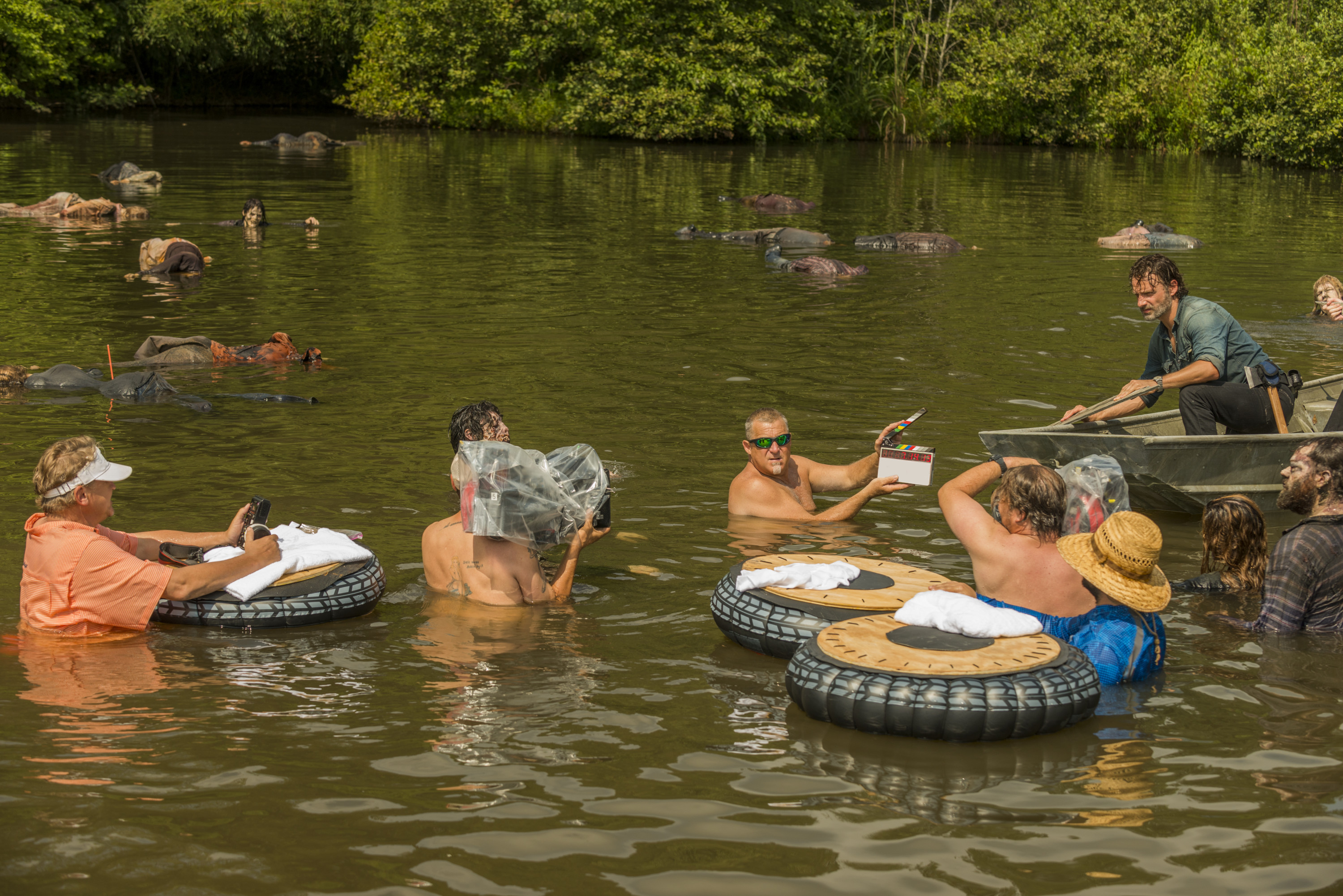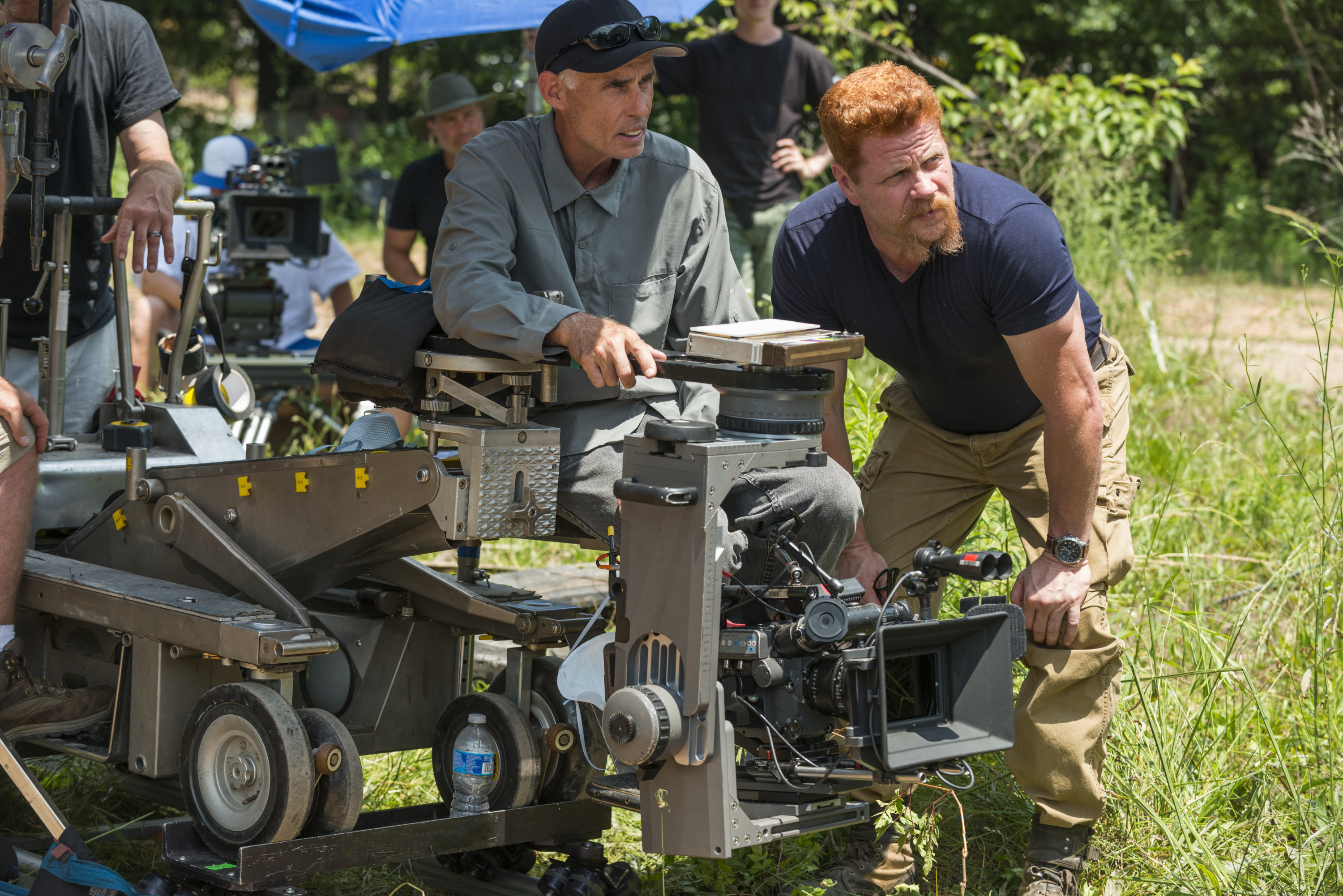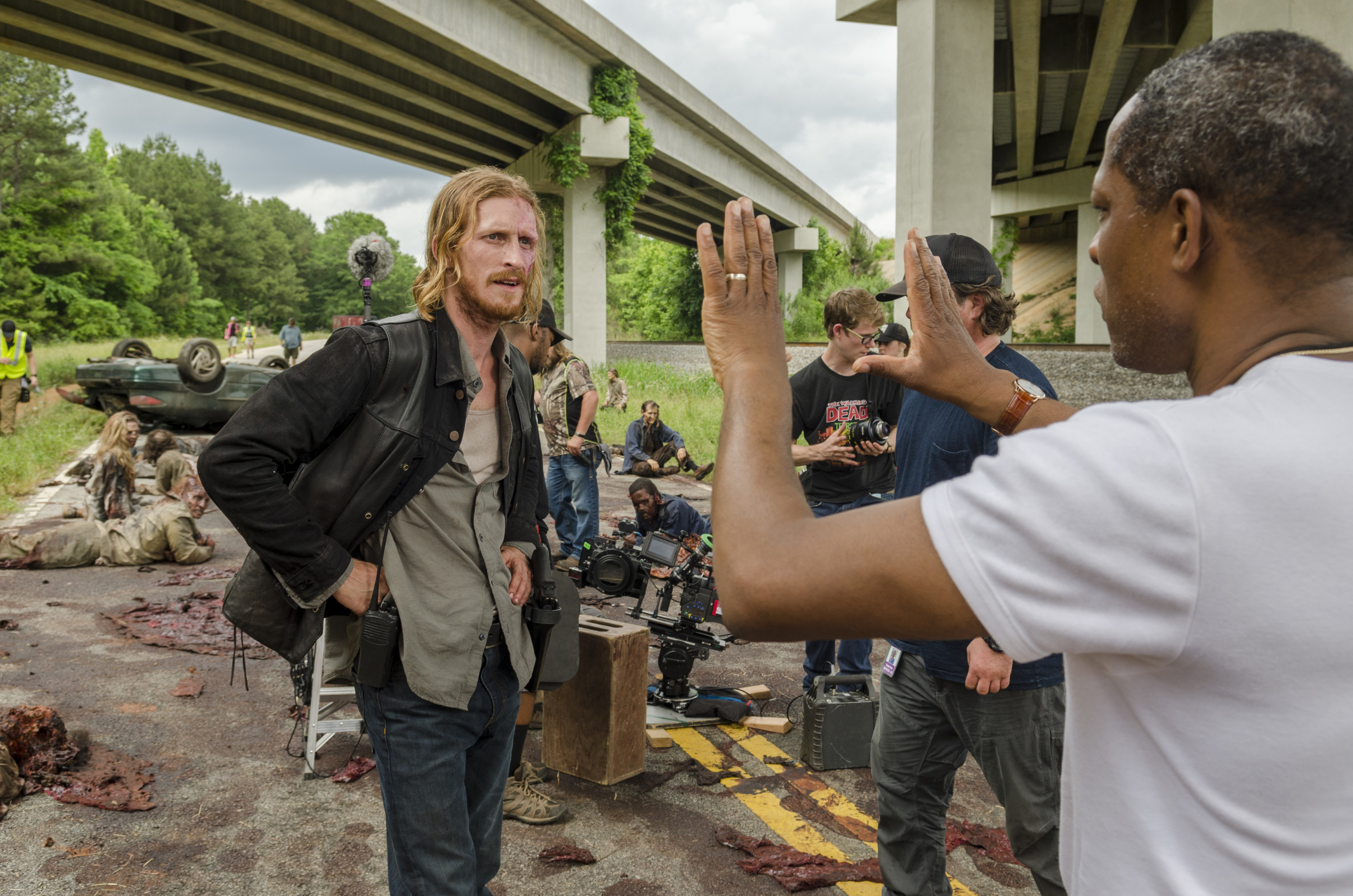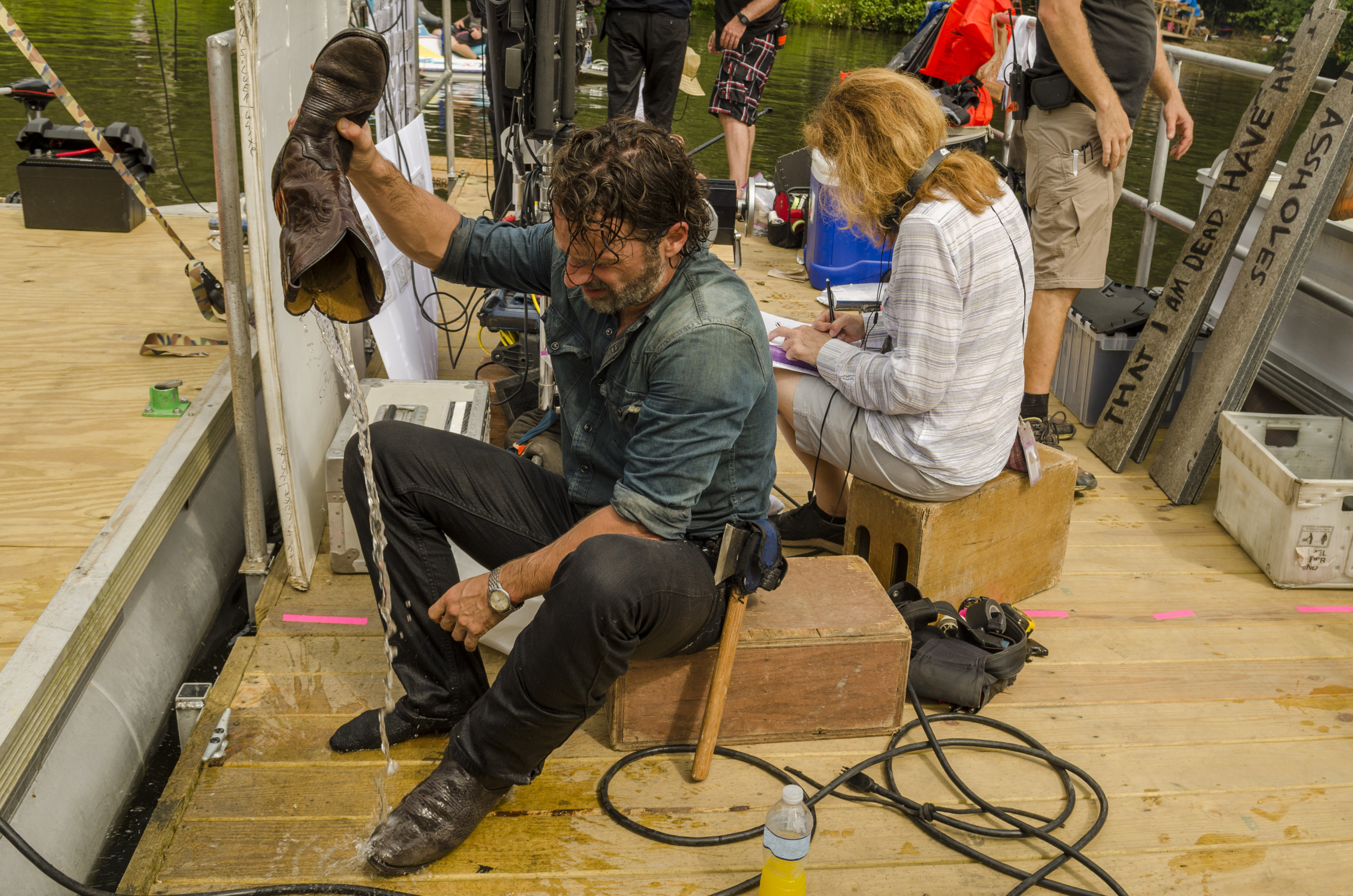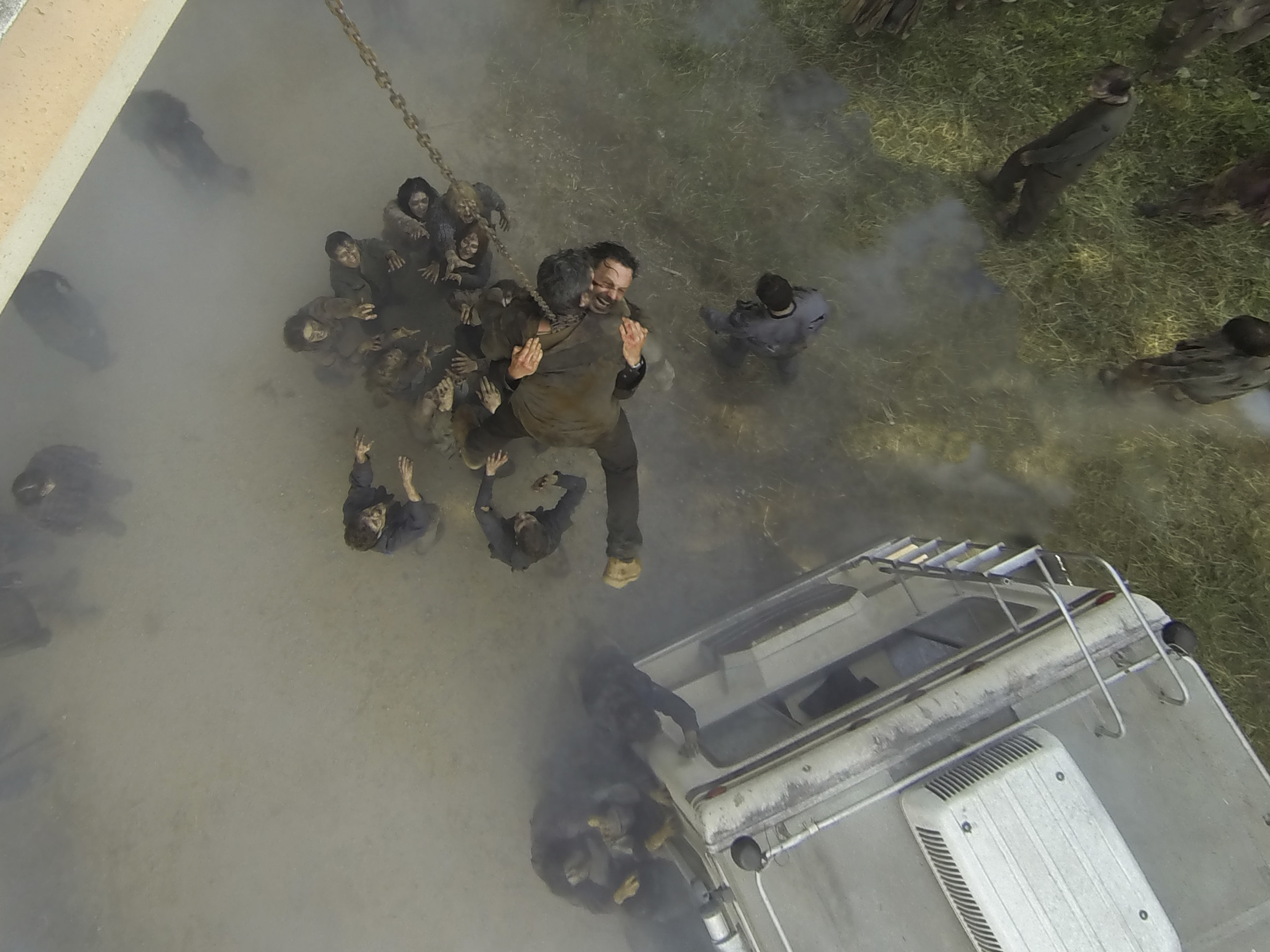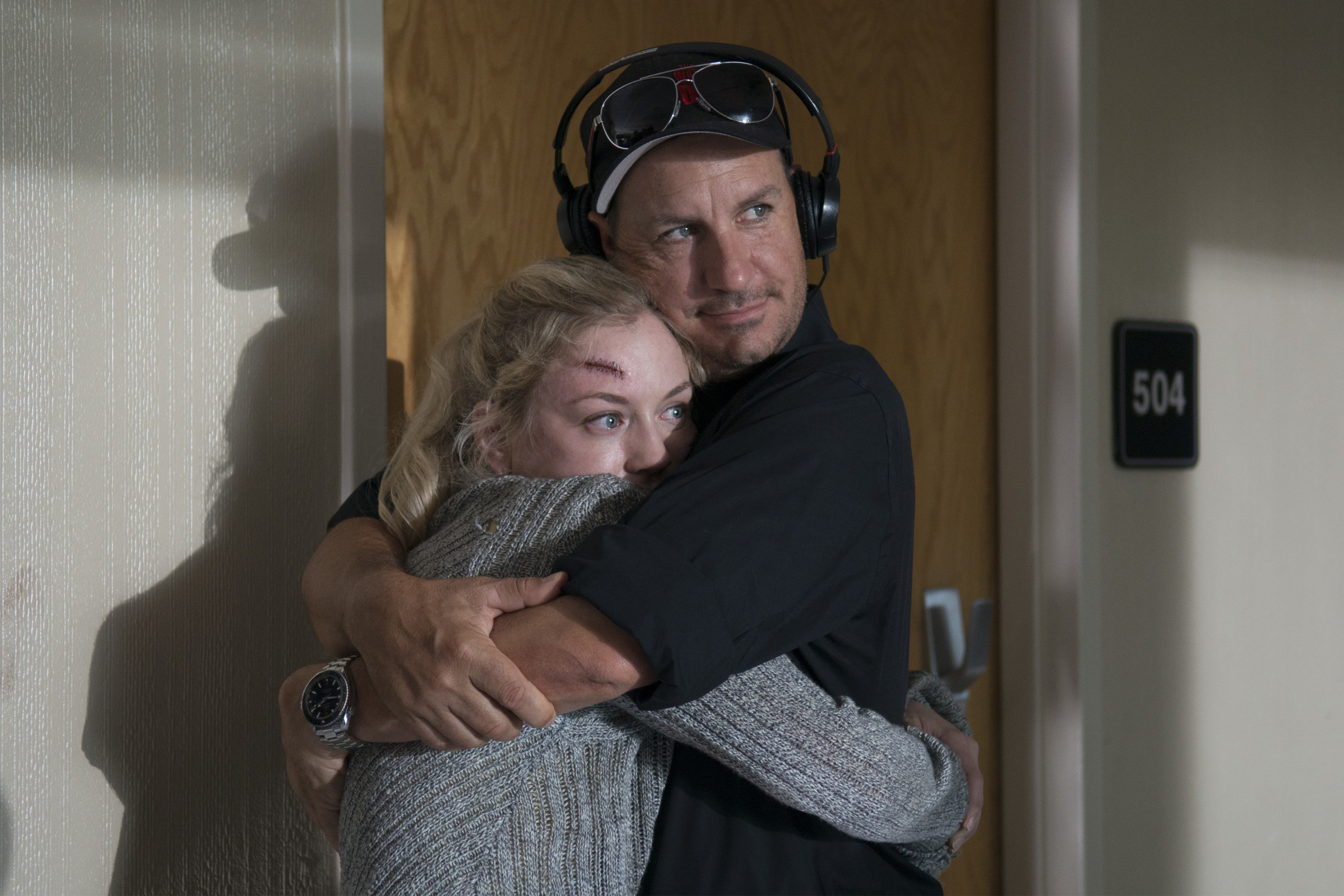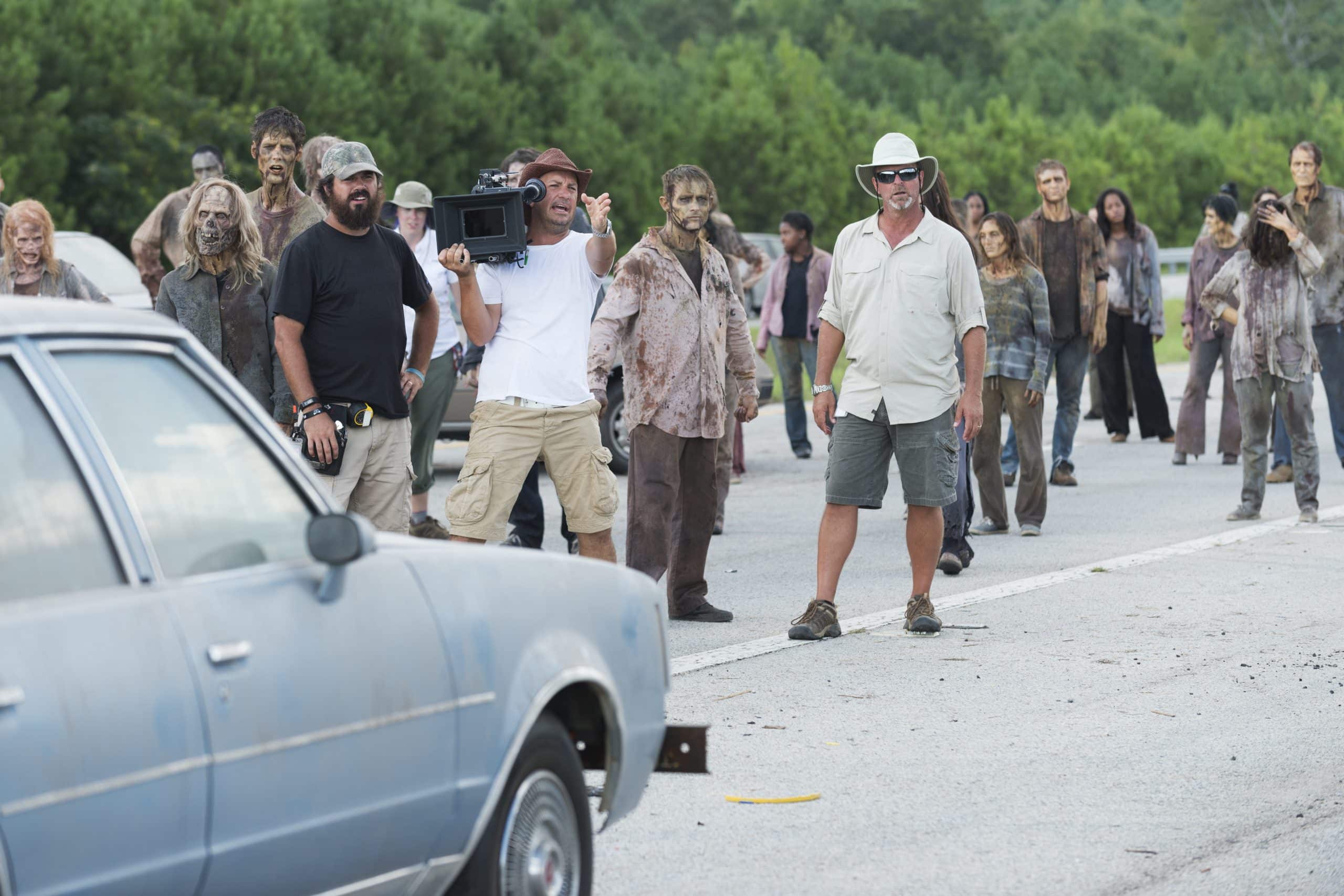Despite what the marketers of digital video equipment might want you to think, the act of making movies and television shows on film is far from dead. In fact, 64 movies were shot on film in 2015, including several blockbusters such as Quentin Tarantino’s The Hateful Eight and Star Wars: Episode VII — The Force Awakens.
Some of television’s biggest smash hits were also captured on celluloid including AMC’s The Walking Dead. The show’s director of photography Michael Satrazemis has shot every season on film and, with the second half of season seven about to unfold on February 12, Format caught up with him to find out why he prefers the analog medium and if he’s worried about its future.
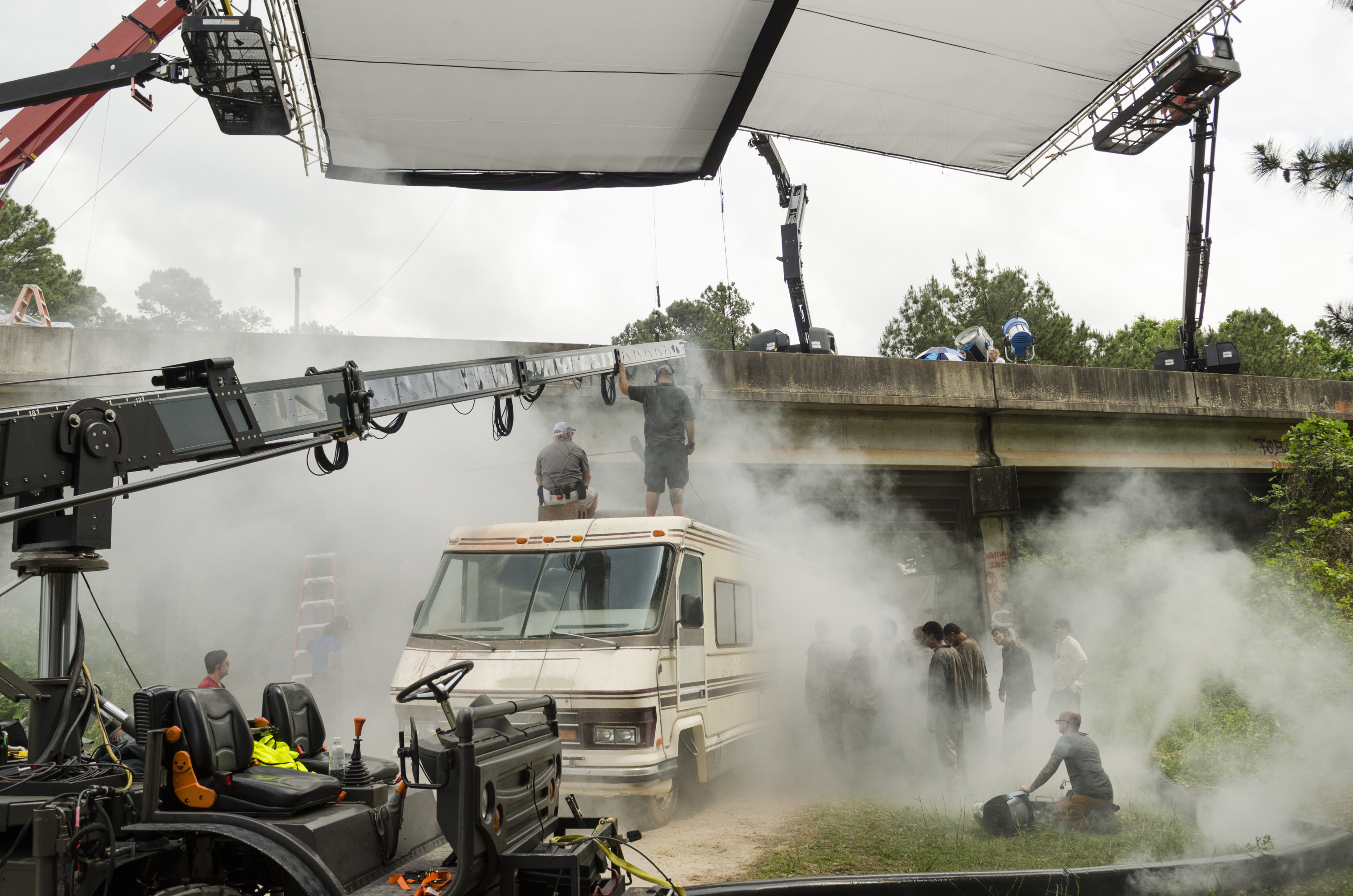
Behind the scenes of season seven, episode one.
Format: Hi Michael! First of all, why do you use film to shoot The Walking Dead?
Michael Satrazemis: I was raised on film, so I know it better than digital. I like it better because it takes more skill. You can’t just fix it later. In digital, we rely a lot on post-production—but film doesn’t react like that. You have to put a little more care into the filmmaking process. You have to be more of a filmmaker and that has an effect on the whole product. You have to pay attention to the lighting, the contrast and what you’re exposing things at, because that really starts defining the look. Film becomes a character in the show.
What type of film do you use?
We played around with a bunch of different negatives, but Kodak Vision3 500T Color Negative Film 5219/7219 in 16mm really allowed us to play in post-production and it gave us a tighter grain structure. I still like seeing the grain. We have screenings for each episode and when it’s projected in the theater, you can see the actual grain. The film also has a softer color palette that really works for the show.
What are the benefits of using 16mm film?
Shooting 16mm means that we’re using smaller and lighter cameras, so we can move a lot faster than we would with a digital camera. Our show consistently evolves and brings in new people and new worlds. Our heroes travel and move, so we cover a lot of ground—16mm is the only way.
Are film cameras as reliable as digital cameras?
People have used film cameras in wars and they can handle all kinds of weather. They stand up to abuse. For The Walking Dead, we battle, we run through the woods, we go everywhere. It’s good to have old German machinery. We have Aeroflex cameras that have been around forever. With digital you have to be careful with too much heat or too much cold.
The key to success with film is making sure to have experienced camera operators, along with a great processing lab and a well-defined protocol and process for handling the film.
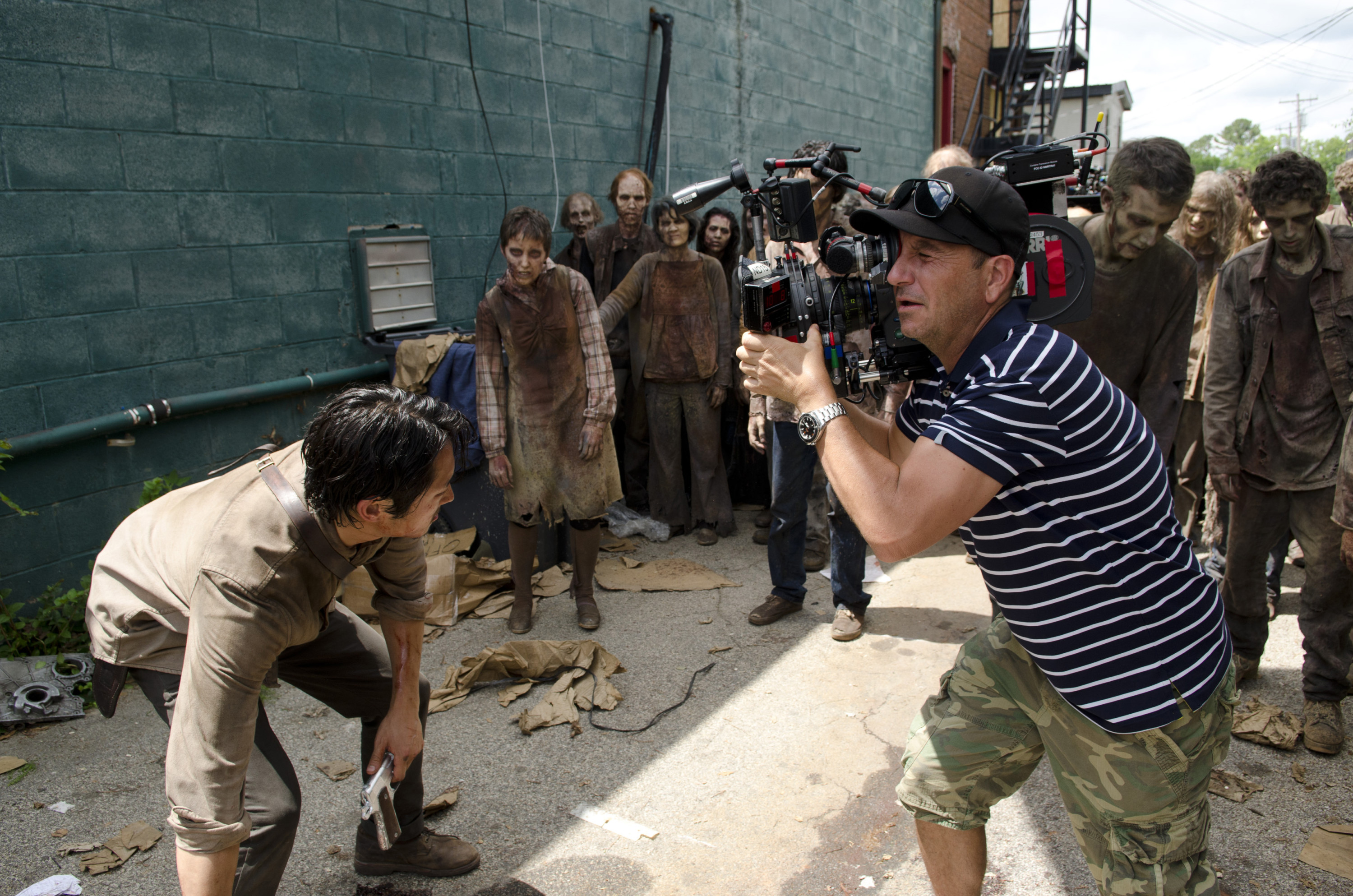
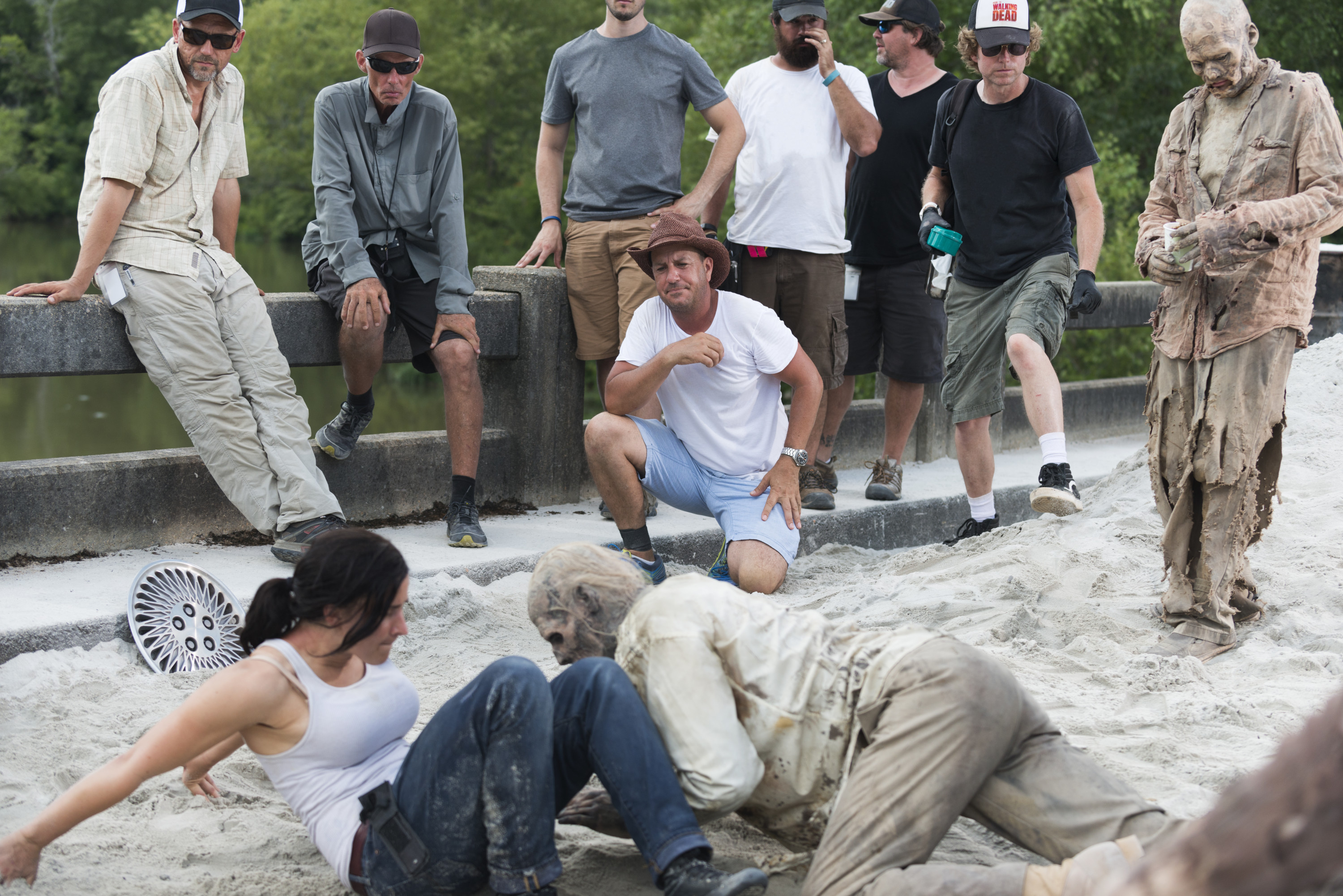
Satrazemis on the set of The Walking Dead.
In recent years, Kodak stopped producing some of its film stocks. Are you concerned about the future of film?
I had a lot of concerns for a while. We had to call up Kodak and ask them. I had dinner with Jeff Clarke, the CEO of Kodak, and he basically said they’re trying to keep it alive. I think film only represents about 5 per cent of their business, but Kodak is intent on keeping it around as a medium. They’re going to buy a lab in Atlanta, which means they’ll control the entire process so that they can keep it around for as long as they want. That’s a very good sign for film.
I think film will always be around. There’s a lot of support in Hollywood to keep shooting film. And I’ll always try to support and shoot film.
Would you recommend that new filmmakers work in analog?
I think it’s your job as a filmmaker to know the medium inside and out. Film is such a beautiful palette to create on. If you have the opportunity, definitely use it.
Finally, we have to ask, what can we expect from The Walking Dead’s second half of season seven?
I can’t give anything away, but it ramps up pretty hard. Scott Gimple, the executive producer, is so good at switching it up a lot, ramping the pacing and the way he tells the story. So the second half is big!”
Check out more behind the scenes photos from The Walking Dead season seven with photography by Gene Page:
